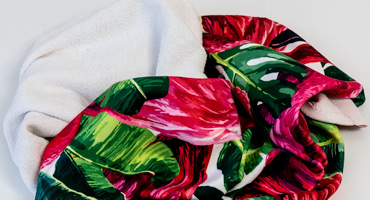Medical textiles are one of the fastest growing sectors of the technical textile market in the medical industry.
New areas of application for medical textiles have been identified thanks to the development of new fibers and technologies for the production of yarns and fabrics. The development of textiles, both natural and artificial, is usually aimed at increasing the comfort of users.
The development of medical textiles can be considered as such a development that truly aims to transform patients' painful days into comfortable days.
It also provides greater comfort for healthcare workers through the use of innovative solutions.
Types of textile materials used in medicine
Textile materials in medical applications include medical garment fabrics, fibers, yarns and composites.
Depending on the application, the main requirements for medical textiles are absorbency, tensile strength, flexibility, softness and sometimes biostability or biodegradability.
Fibers used in medicine can vary from natural fibers such as cotton, silk, regenerated wood fluff (absorbent layer), to artificial fibers such as polyester, polyamide, polyethylene, glass, etc. In particular, cotton fabrics are used to produce bedding and medical fabrics, emphasizing their high quality, certificates and use in industries where the safety and durability of materials are crucial.
The use of different fibers in medical fabrics
Below is a list of fibers and their direct applications in the medical textiles industry:
Cotton: surgical gowns, bed linen, sheets, pillowcases, uniforms, surgical stockings. Medical cotton is particularly valued for its breathability, durability and ease of cleaning, making it an ideal material for the production of medical clothing, such as gowns or protective masks, meeting the requirements of Oeko-Tex certification.
Viscose: hats, masks, cloths
Polyester: aprons, masks, surgical drapes, blankets, duvets
Polyamide: surgical hosiery
Polypropylene: protective clothing
Polyethylene: surgical covers, curtains
Requirements for fabrics for medical clothing
Fabrics for medical clothing should meet a number of utility values. First of all, they should be highly resistant to friction and mechanical damage, as well as:
- Low shrinkage in water washing at high temperatures
- Color fastness
- The ability to combine colors without fear of color change
- Comfort in use
Good quality fabrics for medical clothing will have the appropriate certificates. The most important of them is: a certificate of compliance with the standard: CEN/TS14237:2015 (ENV 14237-2002) - textiles in the healthcare system. Additionally, these fabrics often have the Oeko certificate, which confirms that the materials meet the rigorous Oeko-Tex standards, ensuring safety and ecological quality, which is particularly important in the production of clothing intended for medical personnel and children.
Fabrics for medical clothing in times of pandemic
This is especially important today, when the COVID-19 coronavirus epidemic is taking place. There is a shortage of protective masks for healthcare personnel everywhere in the world.
Those that protect best should be made of medical clothing fabrics, two or three layers. Masks should be able to be washed multiple times and easily ironed, and those made of surgical fabrics can be sterilized in autoclaves. The resistance of materials to repeated washing is crucial to ensuring durability and comfort of use.
Who is medical workwear intended for?
Medical workwear is designed for various groups of healthcare workers, including:
Doctors: They wear special medical gowns that protect against infections, contamination and ensure sterility during medical procedures.
Nurses and nurses: They use medical uniforms that are not only functional but also facilitate the identification of specialties or roles within the medical facility.
Paramedics: They wear special clothing adapted to work in the field, characterized by durability and additional protective elements, e.g. reflectors.
Medical and laboratory technicians: They wear lab coats and protective clothing that protect them from contact with hazardous materials and chemicals.
Support staff in hospitals and clinics: This includes cleaning, administrative and medical staff, who also wear appropriate protective clothing to maintain hygiene and safety.
Medical and nursing students: They are often required to wear work clothes during placements in hospitals and clinics, which helps maintain hygiene and safety standards and prepares them for future work in the profession.
Each of these groups has its own specific workwear requirements, but the common goal is to ensure hygiene, protection and a professional appearance in the healthcare environment.
How to wash and care for medical clothing?
Washing medical clothing requires special attention to ensure effective disinfection and hygiene. Different types of polycotton are perfect for such conditions, because they are not only durable, but also comfortable in everyday use.
First of all, medical clothing should be washed separately from regular clothing to avoid potential cross-contamination. It is recommended to use antibacterial detergents and wash at high temperatures, usually between 60 and 90 degrees Celsius, which helps eliminate microorganisms.
It is also worth remembering to dry at high temperature or use the disinfection function in the washing machine,






